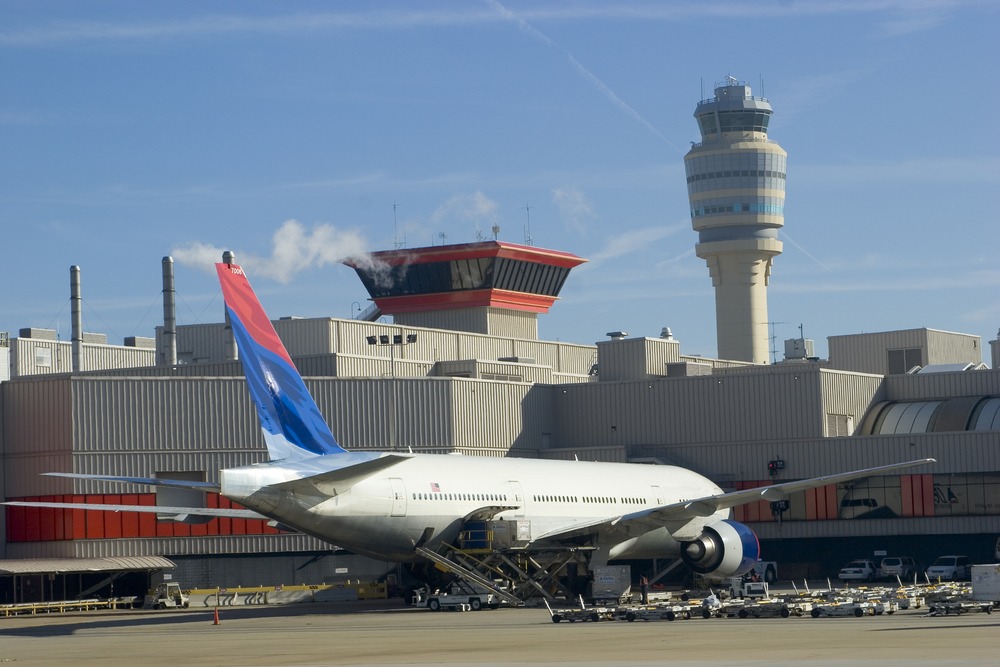
A proposal to privatize air traffic control in the United States would help facilitate modernization of the decades-old air traffic control system, a model that has seen success in Canada, argues an analyst at the independent, non-profit American Action Forum (AAF).
Brianna Fernandez, a data analyst with AAF, says that because the Federal Aviation Administration’s funding is uncertain and enmeshed in political gridlock, upgrading the World War II-era, ground-based radar technology to GPS-based technology is close to impossible.
But privatization would correct that, she said.
“The most important problem to solve is the unreliable funding that (air traffic control) is facing now,” she said in an interview with Transportation Today. “Switching to privatization would stabilize the revenue stream and make modernizing technology possible.”
Fernandez examined the cost of implementing H.R. 2997, the 21st Century AIRR Act, which reauthorizes the FAA, and transfers operations of air traffic control (ATC) services to a separate not-for-profit corporate entity. The bill, sponsored by U.S. Rep. Bill Shuster (R-PA), would shift funding for air traffic control from aviation-related taxes and general funds to user fees levied on airline consumers for services rendered.
Fernandez says it works in other countries, and should be a model for how it works in the United States.
“Opponents of the legislation argue that separating ATC functions from the federal government will negatively impact consumers,” she wrote in her recent white paper: “Is it Time for the U.S. to Privatize its Air Traffic Control. “However, many other industrialized countries have made the shift and benefited from the change. By reforming their ATC, other countries have created fully self-funding systems with greater flexibility to modernize their technology.”
Fernandez pointed to Canada as an example.
Canada moved to a privatized ATC system, Nav Canada, nearly 20 years ago and was able to quickly modernize its air traffic technology in 2009 to an automatic dependent surveillance-broadcast system, Fernandez noted. This ATC system determines an aircraft’s position via satellite navigation and then broadcasts its location for tracking purposes. While the FAA has begun to use the same system in automation platforms, there is no requirement for aircraft to be equipped with this technology until 2020, and many other modernization components of more updated ATC systems aren’t expected to be functioning until 2025.
In contrast, since 2007, Fernandez wrote, the FAA has invested $3 billion in a satellite-based GPS tracking technology, included in a program known as NextGen, but has not either identified the total costs of NextGen, or set schedules for implementing it. Current estimates put the total cost at $160 billion by 2030.
Canada’s system is seen as having increased efficiency in airline traffic, while also having decreased costs.
“Since it privatized its ATC services, Canada has implemented GPS technology, which has helped to lower costs to aviation users,” Fernandez wrote. Aviation taxes in the United States have slightly increased in the last two years. Nav Canada is also one of the safest systems in the world, and has won three International Air Transport Association Eagle Awards for the best ATC provider.”
Canada’s lower costs and higher efficiency can be directly linked to the use of satellite navigation, Fernandez says, because it allows aircraft to fly more direct routes and to more easily avoid inclement weather, resulting in fewer delays and less fuel use. Data from Global Air Navigation Services Performance Reports show that Canada has consistently lower aviation costs per flight hour than the United States. Between 2010 and 2015, average costs per instrumental flight rules (IFR) flight hours for the FAA’s Continental sector were above $400 per hour, while Nav Canada’s Continental flight hours averaged around $300 per flight hour.
While critics suggest that Canada’s air traffic is too small to be compared to the United States, Fernandez dismisses that idea.
“Canada is the second largest aviation system in the world, so it’s certainly a good model for the U.S.,” she says. “The FAA hasn’t had a reauthorization since 2007. This model would take the budget for ATC out of the political arena and stabilize it. Canada has done this same thing and has seen its user fees go down as a result.”
Similar systems exist in Australia, Germany, New Zealand and the United Kingdom, Fernandez wrote.
“Removing air traffic control from governmental constraints has allowed other countries to modernize their technologies at rates faster than the United States, while maintaining a safe system with lower costs,” she says in her paper.
“The House Transportation and Infrastructure Committee’s proposal to transfer ATC services to a not-for-profit corporation and reform its funding structure would help to accelerate the modernization of the U.S.’ air traffic technologies and provide the flying public with the most efficient air transportation possible. Privatization would also provide ATC with the flexibility and funding it needs to be an innovator in the air navigation service space,” Fernandez concluded.
The FAA’s funding authorization is set to expire on Sept. 30.